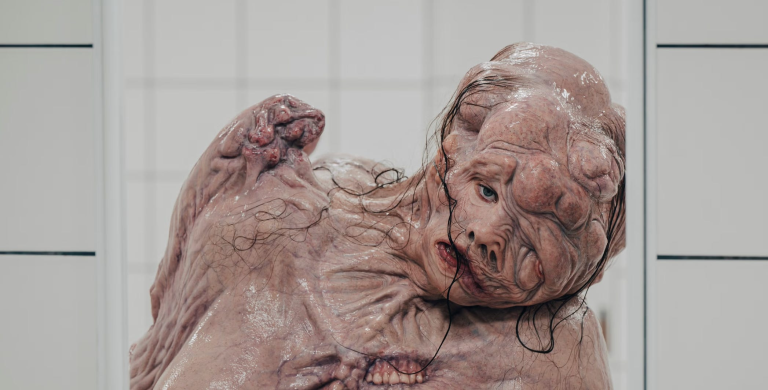
“Trayvoning” And The Misuse Of The Black Body
Today, I considered becoming a troll.
After coming across an article in the Daily Mail on “Trayvoning” — wherein people pose as the dead body of Trayvon Martin, complete with a bag of candy and a can of iced tea — I was moved to a rare state of anger. Not only for the members of the Martin family, who continue to endure shock after shock at the hands of the media and the general public sphere, nor only for the obtuse presence of racism which continues to pervade what others still stubbornly deem a post-racial society. On top of these, I smoldered because of the continued currency of the black body as an object, not only of derision and false terror (hello, Mandingo myth), but of humor, even in and after death. Spurned by this, I took the preliminary steps to troll with a warped intention of “doing good.” I typed “Trayvoning” in my toolbar. I took to my Twitter account to oust the handles of those guilty of utilizing this trend. Fingers poised over my keyboard, I realized that anger only begets anger. So rather than a vitriolic declaration, I decided upon a full-length discourse.
Arguably one of the best ruminations on race relations to emerge in the aftermath of the Zimmerman verdict is a piece on Salon by Brittney Cooper, titled, “White supremacy, meet black rage.” In the article, Cooper articulates the modes in which Zimmerman operated as a non-white man within a white supremacist structure to racially profile in the first place:
No, George Zimmerman is not white. But his assumptions about black men are rooted in the foundational assumptions of white supremacy and his treatment by the justice system have conferred upon him privileges usually reserved for white men. The malleability of white supremacy for non-black bodies says something about the singular power and threat of the black body in this kind of racialized system.
The pertinence of this observation in relation to the trend of “Trayvoning” is not only found within the justice system, as Cooper notes, but in a larger cultural definition of a white supremacy as it relates to class and race relations. It is no coincidence that the majority of those who have posted pictures of themselves “Trayvoning” are young, white men who exist in an immediate state of privilege in this sole same system, utilizing a state of white supremacy for their own superficial enjoyment. With relish, these young, white men have subverted what Cooper calls the “threat of the black body” by relegating an individual black body — the actual Trayvon Martin — to a dead black body, to a body in abstract. This stripping of identity results in a subversion, which renders the black body to be used as a possible object, or canvas, for the purpose of dark humor. To pantomime the post-mortem pose of Trayvon Martin is to engage with black-face without the paint. “Trayvoning” is the macabre grandchild of the minstrel show.
If you, dear reader, decide to perform a quick Twitter search on “Trayvoning”, you will no doubt come across the feeds of those who have postured and posted the images they took. Most likely, you will also come across a heated discourse between these users and others who have expressed similar outrage as I. As is already apparent, some of these “Trayvoners” — in the sense of the trend — have, and will continue, to defend their actions with the platform of humor, not racism. Their hearts were in the right place, they might think. They are not bad people (and for the record, I yield to the complexities of what it takes to make a person, let alone a “bad” person); they were only gunning for laughs. In the wake of the Zimmerman trial, some might take this as a valid premise. “I think his heart was in the right place. It just went terribly wrong,” explained Juror B37 in an interview on CNN’s “Anderson Cooper 360” on Monday night. Zimmerman, too, used the presence of the abstract black body and interpreted through the lens of his own prejudices, eventually using it as a means to his own particular, fateful actions. And like those engaged in the trend of “Trayvoning,” Zimmerman forgot that a body was a body like his own. He forgot that a body can have a name, and he forgot that a body, too, can be a person. ![]()











